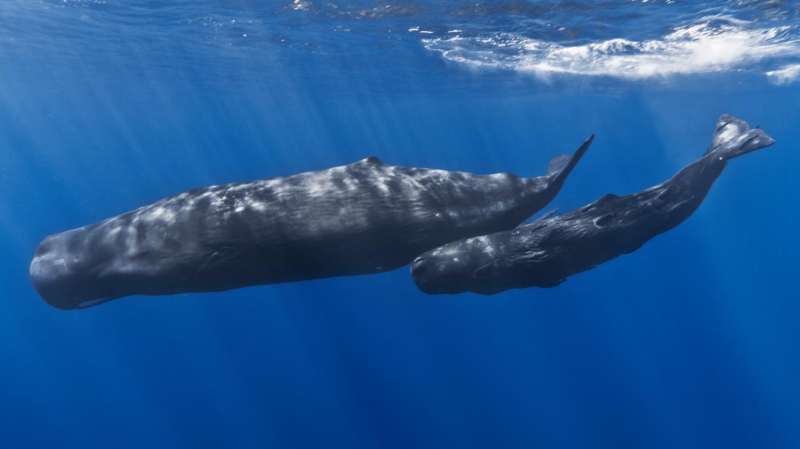January 10, 2024 report
This article has been reviewed according to Science X's editorial process and policies. Editors have highlighted the following attributes while ensuring the content's credibility:
fact-checked
peer-reviewed publication
trusted source
proofread
Sperm whales found to live in large, matrilineally based clans

A sperm whale expert at Dalhousie University, in Canada, has found evidence showing that sperm whales form large matrilineally based clans that have their own coda dialect. In his paper published in the journal Royal Society Open Science, Hal Whitehead describes how he, working with multiple colleagues over many years, used underwater microphones to listen in on conversations among the whales.
Prior research has shown that whales communicate with one another using sequences of clicks that have come to be known as codas. Prior research has also shown that most whale species have distinctive variations among groups that are unique to members of their group—or clan, as Whitehead calls them. Over the course of many years, he has worked with colleagues on the study of sperm whales. In this new effort, he sums up their findings.
In analyzing sperm codas from whales all across the Pacific Ocean, the researchers found evidence that they form matrilineally based units of approximately 10 females and their offspring—such units, he notes, form the basic elements of larger clans. The researchers have also found evidence that the whales form clans with as many as 20,000 members. Within such clans, members interact, look out for one another, help raise offspring, and ward off attacks by orcas.
They also all communicate using the same dialect. All sperm whales in the Pacific speak the same language, Whitehead notes, but each clan has its own unique dialect. Researchers have also found that while clan territory may overlap, whales from different clans do not interact with one another.
Whitehead and colleagues also found that there are seven clans in the Pacific Ocean, adding up to approximately 300,000 whales. Each of the clans was found to be based almost entirely around females and their young—the males exist on the periphery and appear to serve only as a means for reproduction.
The researchers have also found evidence of clan-wide communications, noting the observation of debates that involved whales apparently looking for a consensus on things like travel destinations. Whitehead concludes that he has come to think of the clans as whale nations, each with their own discernable culture.
More information: Hal Whitehead, Sperm whale clans and human societies, Royal Society Open Science (2024). DOI: 10.1098/rsos.231353
Journal information: Royal Society Open Science
© 2024 Science X Network




















